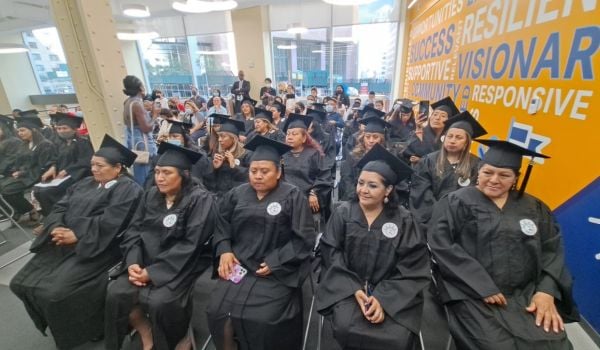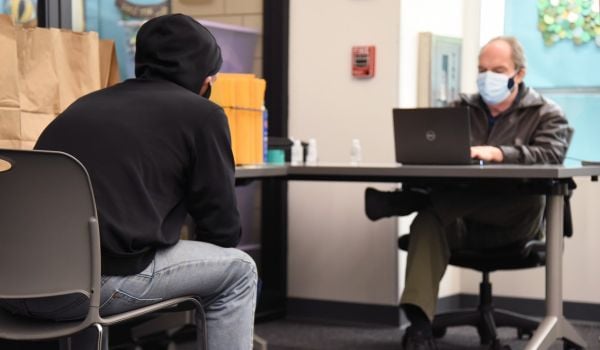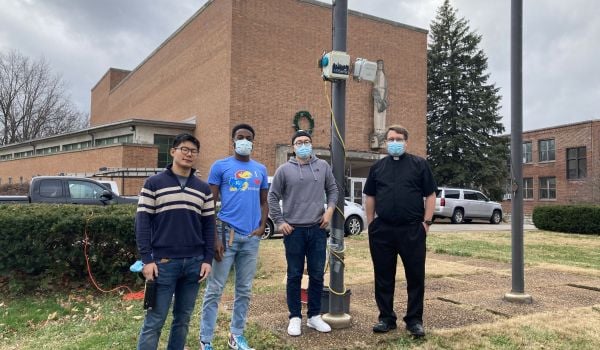Welcome to “The Mobile City,” our weekly roundup of noteworthy transportation developments.
California Judge Rules Prop 22 Unconstitutional; Decision Could Affect Gig Workers Elsewhere
A California state Superior Court judge has thrown out Proposition 22, last fall’s ballot measure that prevented gig workers from being classified as employees, on a technicality. The move could blunt efforts by ride-hailing companies to keep their drivers from being classifed as employees, Streetsblog USA reports.
Superior Court Judge Frank Roesch ruled the law that set minimum wages for ride-hailing drivers but otherwise prevented them from organizing or obtaining benefits was unconstitutional and unenforceable because of a provision that required a 7/8ths vote of both houses of the state legislature — a “super, super, super duper majority,” as the ruling put it — in order to alter the law in any way.
But even though Roesch threw out the law on a technicality, Streetsblog reports that he also had harsh words for the ride-hailing companies that pushed for its passage. In his ruling, he also wrote that the law “appears only to protect the economic interest of the network companies in having a divided, un-unionized workforce, which is not a stated goal of the legislation.” He added that it does not “protect work flexibility, nor does it provide minimum workplace safety and pay standards for those workers.”
The suit will be appealed to the state Supreme Court, and until it rules, Prop 22 remains in effect pending appeal. But some advocates for gig workers have told reporters they expect it to go to the U.S. Supreme Court — an unlikely development given that the ruling was based on the California Constitution. But as the ride-hailing companies are continuing their push to have similar laws enacted in other states, the odds of a U.S. Supreme Court decision could rise. The Biden administration could give driver advocates a leg up should that happen with its recent reversal of a Trump administration rule that set looser standards for determining who could be classed as an independent contractor under the Fair Labor Standards Act. The article notes that administration officials believe fewer workers should fall into that category.
Cuomo Resignation Could Put Subway Upgrades, Congestion Pricing on Hold
New York’s march towards being the first city in the United States to implement a congestion charge for drivers entering the city core may be sidetracked by the resignation of Gov. Andrew Cuomo, The New York Times reports.
Cuomo, a car enthusiast, was a late convert to the idea of charging drivers to enter Manhattan below 60th Street as a means of funding planned improvements to New York City’s gradually deteriorating subways. But the prospect of getting $1 billion a year for transit proved too appealing to pass up, and in 2019, he began to argue strongly for implementing it. The New York State legislature obliged, passing a bill that year authorizing the charge.
But the federal government has to approve the plan, and it also must undergo an environmental review before it can proceed. All of this means that the fate of both the subway improvement plan and the congestion charge now rests in the hands of his successor, former Lt. Gov.. Kathy Hochul, who took the oath of office as Governor at midnight Aug. 23.
The Times reports that while Hochul, who comes from western New York, remains supportive of the plan, just how supportive may be open to question. Her spokeswoman told the Times on Aug. 22, “Lieutenant Governor Hochul has supported congestion pricing in the past, but the pace and timing is something she will need to evaluate further given the constantly changing impact of Covid-19 on commuters.”
That the subway needs upgrading and expansion ought to be beyond question, and the congestion charge has the added virtue of providing the money to do it — and advance expansions like the Second Avenue subway — while reducing the number of cars entering midtown and downtown Manhattan. Already, according to tolling data, traffic into Manhattan from New Jersey is at 98 percent of pre-pandemic levels, and that’s with many Manhattan office workers still working from home.
The article speculates that Cuomo may have been, and Hochul may be, reluctant to upset suburban voters by pushing full speed ahead with implementing the charge. But before his exit, Cuomo blamed the Feds for the holdup. Former MTA New York City Transit head Andy Byford, however, suggested that with a new administration in Washington, the roadblock was in Albany: “I am puzzled and disappointed to see that New York still hasn’t enacted congestion charging when the apparent barriers now seem to be out of the way,” he told the Times.
As governor, Hochul controls the MTA, which means she has some power to get the ball rolling on the congestion charge. Transit advocates in the city say she should use it: “This transition in Albany comes at a crisis moment for our subways and buses,” said Betsy Plum, the executive director of Riders Alliance, an advocacy group. “Public transit must top Governor Hochul’s packed agenda from Day 1.”
Driver Shortages Force Service Cutbacks in Missouri, Oregon
As the economy has recovered at a brisk pace from the COVID shutdowns, shortages have popped up in several parts of it. One of the biggest shortages is one of people. Service industries, in particular, have had a hard time finding people to fill open positions, and to entice them, businesses have raised starting wages sharply and offered signing bonuses to new workers.
Add mass transit to the list of service industries dangling carrots in front of prospective employees. The St. Louis Post-Dispatch reports that the board of Bi-State Development has authorized its principal subsidiary, St. Louis Metro Transit, to offer incentive pay as a way to recruit and retain drivers and other employees.
Metro Transit is currently 120 to 130 drivers short of the number needed to operate bus and MetroLink light metro service in greater St. Louis. Because of the shortage, St. Louis Metro will reduce the frequency of service on some Missouri-side bus routes from every 15 minutes to every 20 minutes as of Sept. 6, with additional frequency reductions scheduled for November. Metro officials say it takes two months to train a new driver.
The specifics of the incentives were not discussed, reports the St. Louis American, which also noted that a ZipRecruiter estimate pegs annual pay for a Metro Transit bus driver at $33,369.
The transit agency serving Astoria, Oregon, is also cutting service for the same reason, according to a story in Mass Transit from The Daily Astorian. The Sunset Empire Transportation District plans to reduce hours of service on some routes and cut service on others by as much as 50 percent. Many of the cuts will affect weekend service.
Executive director Jeff Hazen, who told the paper he never imagined he would have to make service cuts, said transit equity factored into the choice of services to cut in order to minimize their impact on low-income transit users who rely on the local bus service.
He also said that jobs that require a commercial driver’s license (CDL) are proving hard to fill across the board, not just in transit. He added that his agency was willing to hire drivers without CDLs and train them, but that it had stopped receiving applications completely.
Know of a development that should be featured in this column? Send a Tweet with links to @MarketStEl using the hashtag #mobilecity.

Next City contributor Sandy Smith is the home and real estate editor at Philadelphia magazine. Over the years, his work has appeared in Hidden City Philadelphia, the Philadelphia Inquirer and other local and regional publications. His interest in cities stretches back to his youth in Kansas City, and his career in journalism and media relations extends back that far as well.
Follow Sandy .(JavaScript must be enabled to view this email address)
















